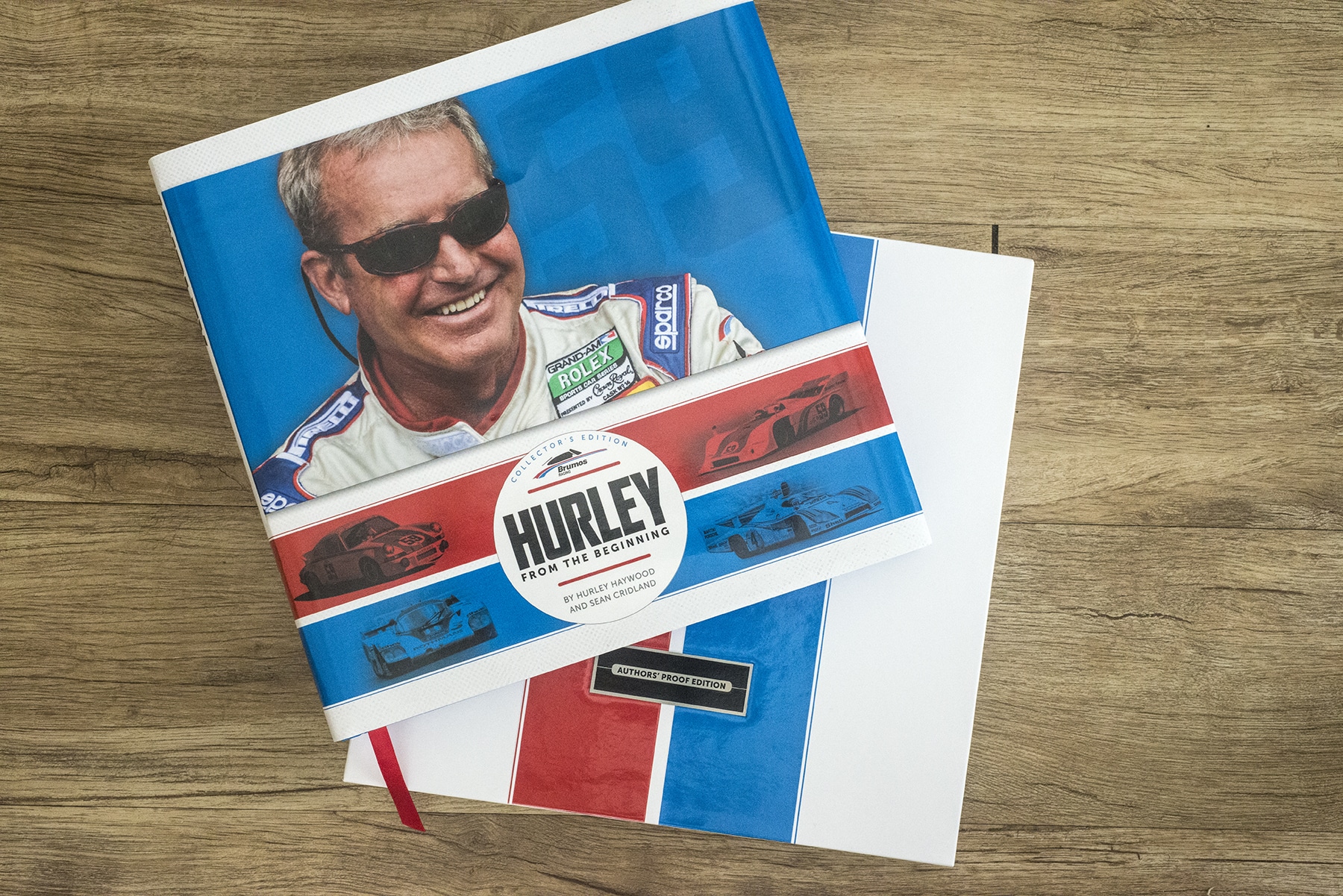Over the past months a number of new, significant books have appeared. We’ll show you five we think are particularly noteworthy – and well worth the investment.
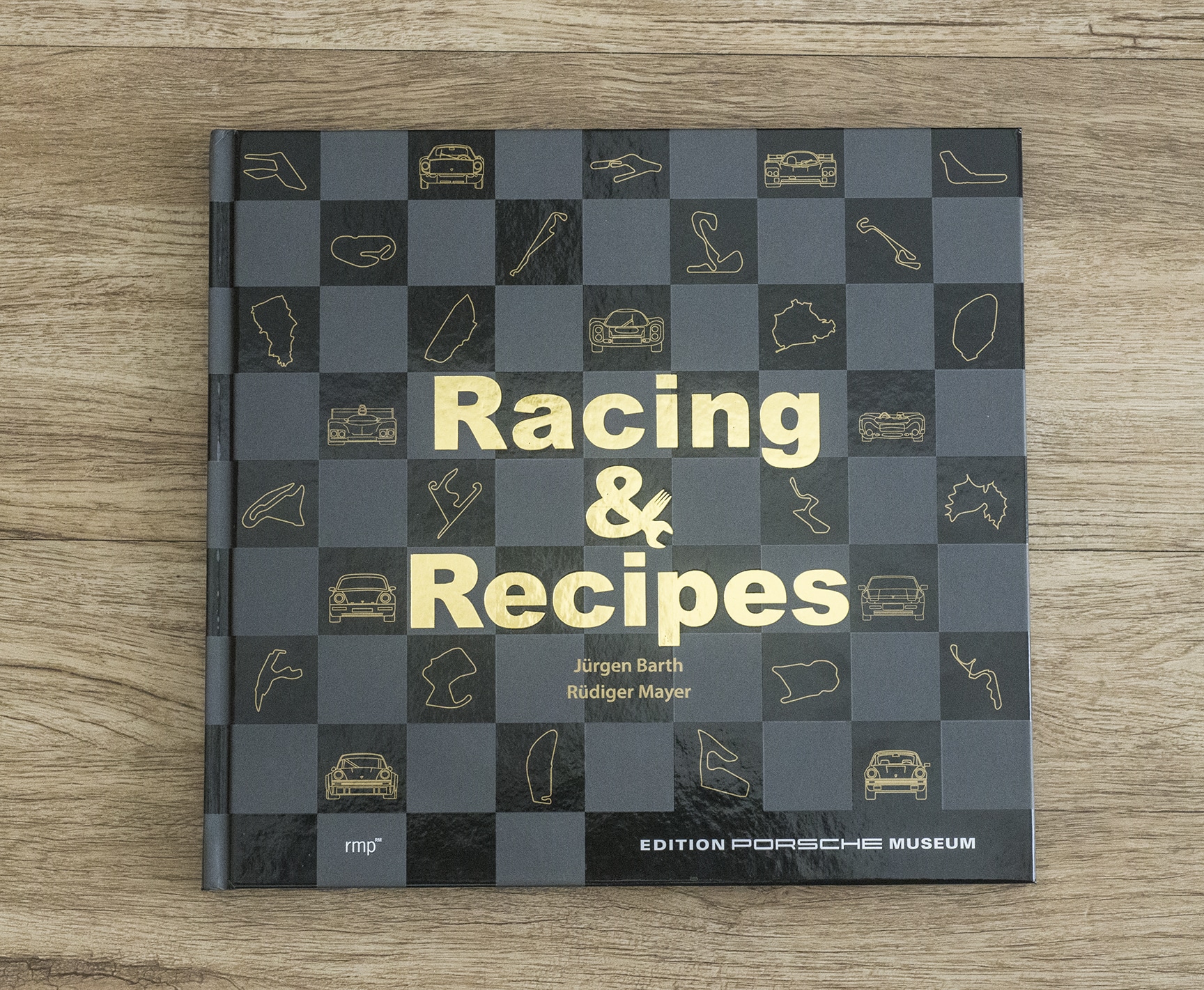
Racing and Recipes – The Racing Cookbook; Jürgen Barth and Rüdiger Mayer. 2017 reality media production, Edition Porsche Museum. 160 pages. ISBN: 978-3-9819070-1-8. $49.95 from www.amazon.com. More information at www.racing-and-recipes.com
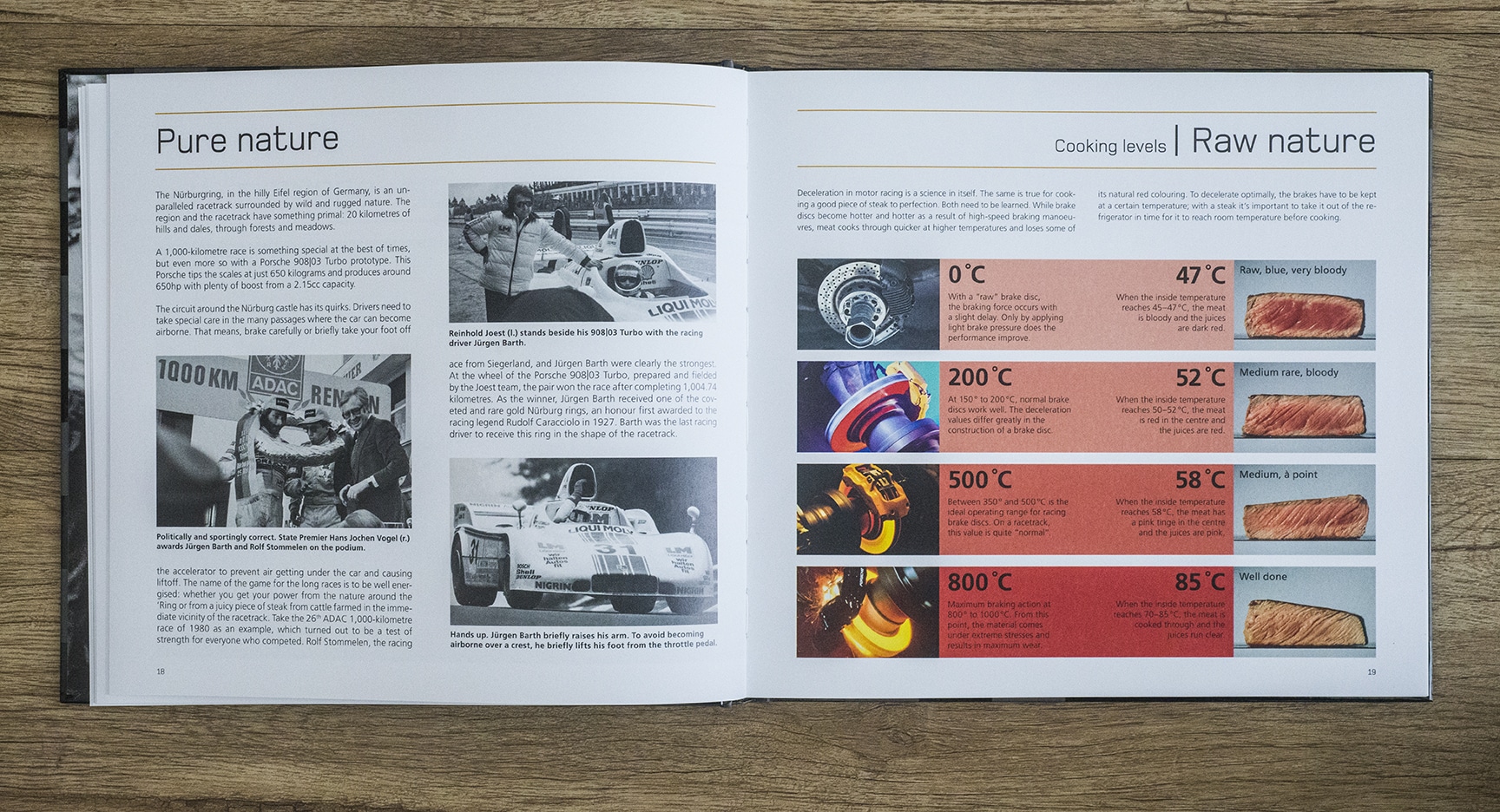
Jürgen Barth is a man of many skills and passions, whether it was managing Porsche’s customer racing programs for years, driving round the clock for days and days on grueling rallies in far corners of the world, or racing twice around the clock to win the 24 hours of Le Mans in 1977 and the 1,000 kilometers of Nürburgring in 1980. But one of his strongest passions, a motivating drive of his, if you will, is cooking.

This delightful book, done with collaborator Rüdiger Mayer, gives Barth 24 opportunities to talk about his racing and present readers with mouth-watering recipes for some of his favorite meals. No fast food or protein bars here, recipes range from salmon to prawns to scallops and sole to Shepherd’s Pie, chicken curry, pork terrine, or spare ribs. Luscious photographs by Teubner Foodfoto Füssen are beautifully lit and cleverly composed and propped with automobilia. Between recipes and instructions Barth and Mayer have alternated racing histories and technical examinations of race circuit and car details.

Porsche Werks/Team – Porsche at the top 24-hour races / Nürburgring / Le Mans / Daytona; Frank Kayser. 2017 Delius Klasing Verlag. 272p. ISBN: 978-3-667-11103-6. $42.63 from www.amazon.com. More information at info@delius-klasing.de
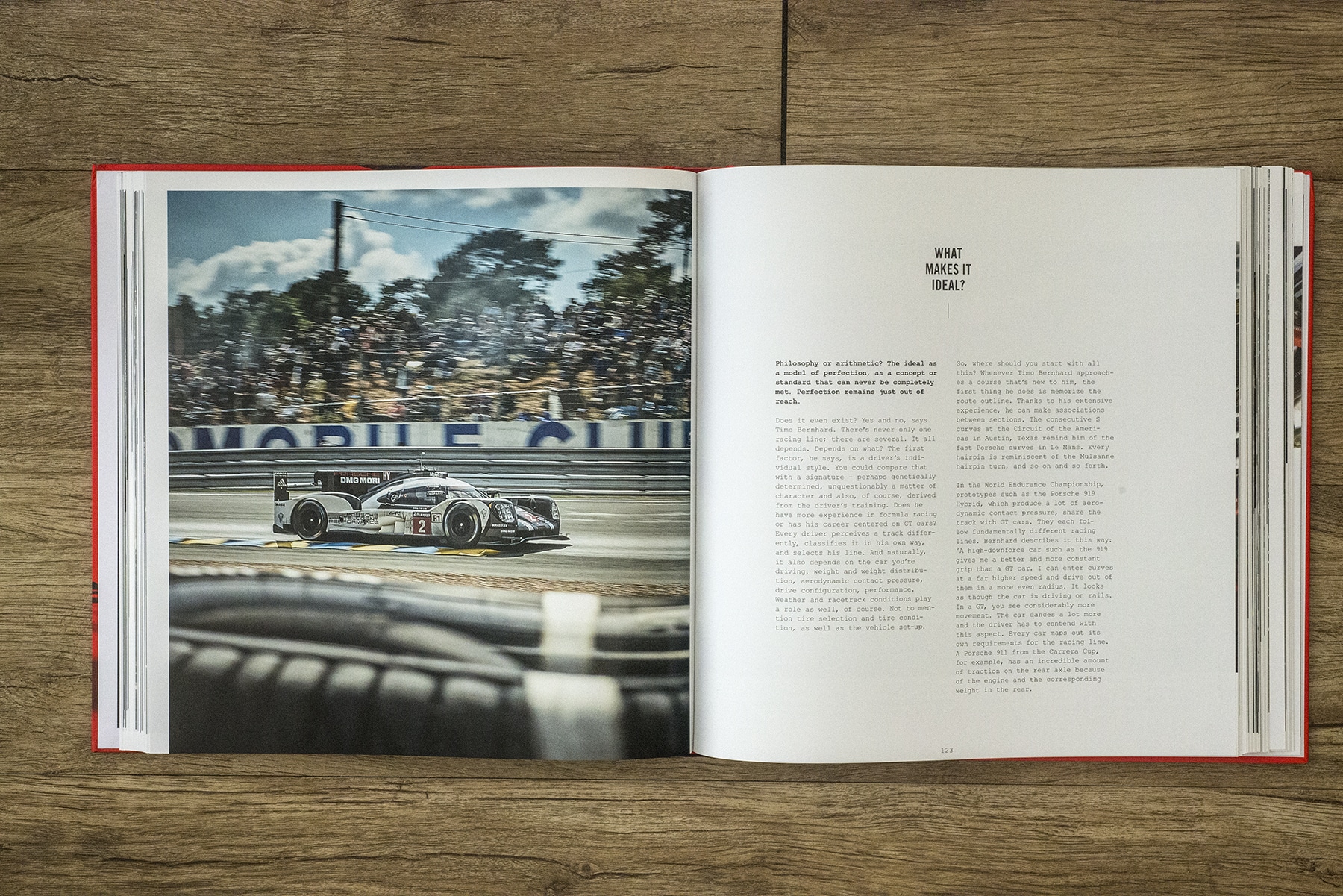
Lavish luxurious illustration seems to be a primary theme of the books selected here, and Frank Kayser’s magnificent Porsche Werks/Team offers hundreds of his beautifully reproduced images (along with some from Thorsten Loeser) that fill his 11.5-inch square book, often spanning a spread across 23 inches. There is enough text in each of its 12 chapters – each by Heike Hientzsch – to give you information and – in a book filed with photos each worth a thousand words, Hientzsch’s work provides flavoring, seasoning, clarification, and reflection.
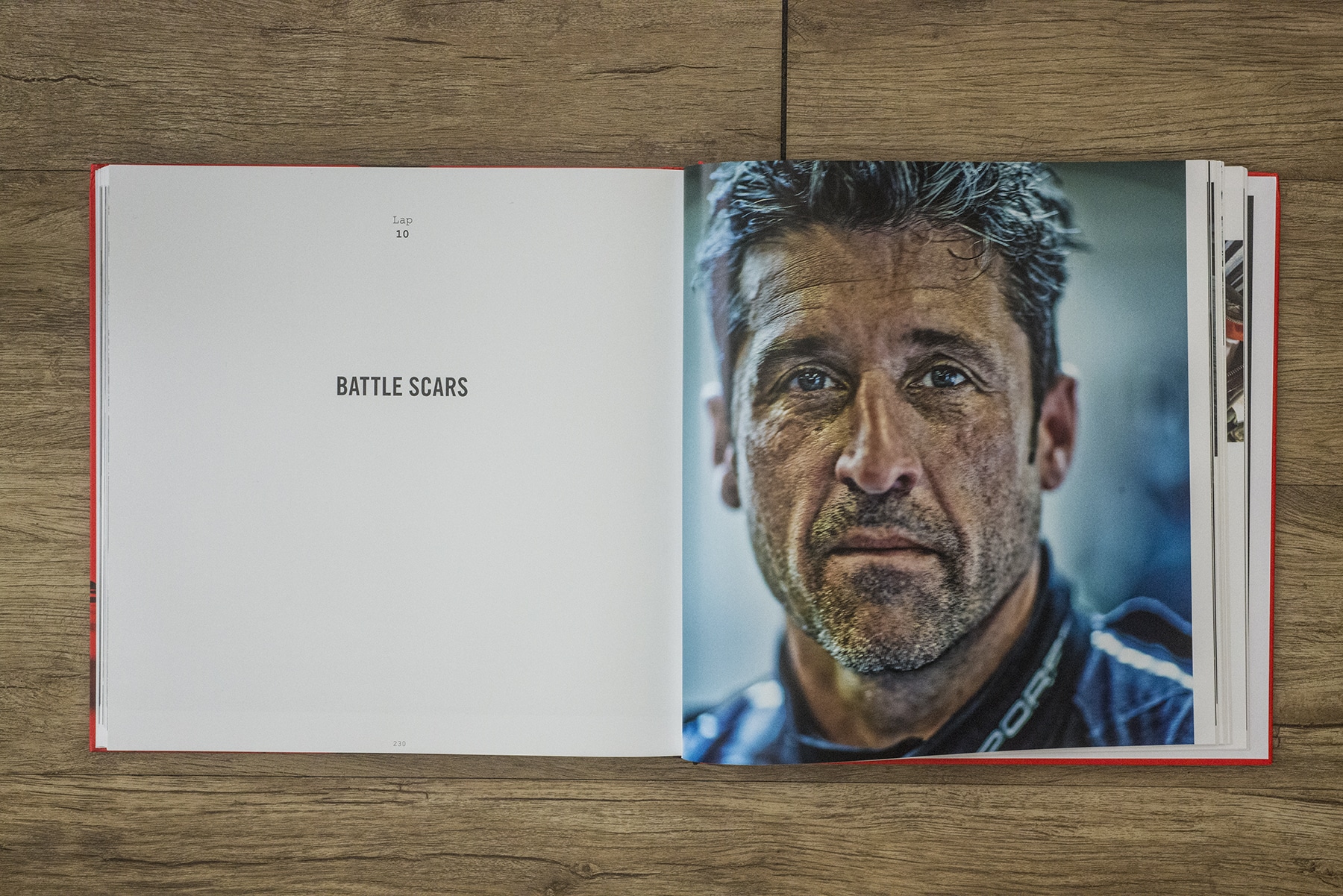
While each chapter’s photographs are compelling and some literally are stunning, in one chapter, called Lap 10 and titled “Battle Scars” – shows the costs and effects of these relentless 24-hour races on drivers, crew, automobiles, and parts. The opening photo of racer Patrick Dempsey following his time at the wheel is riveting.
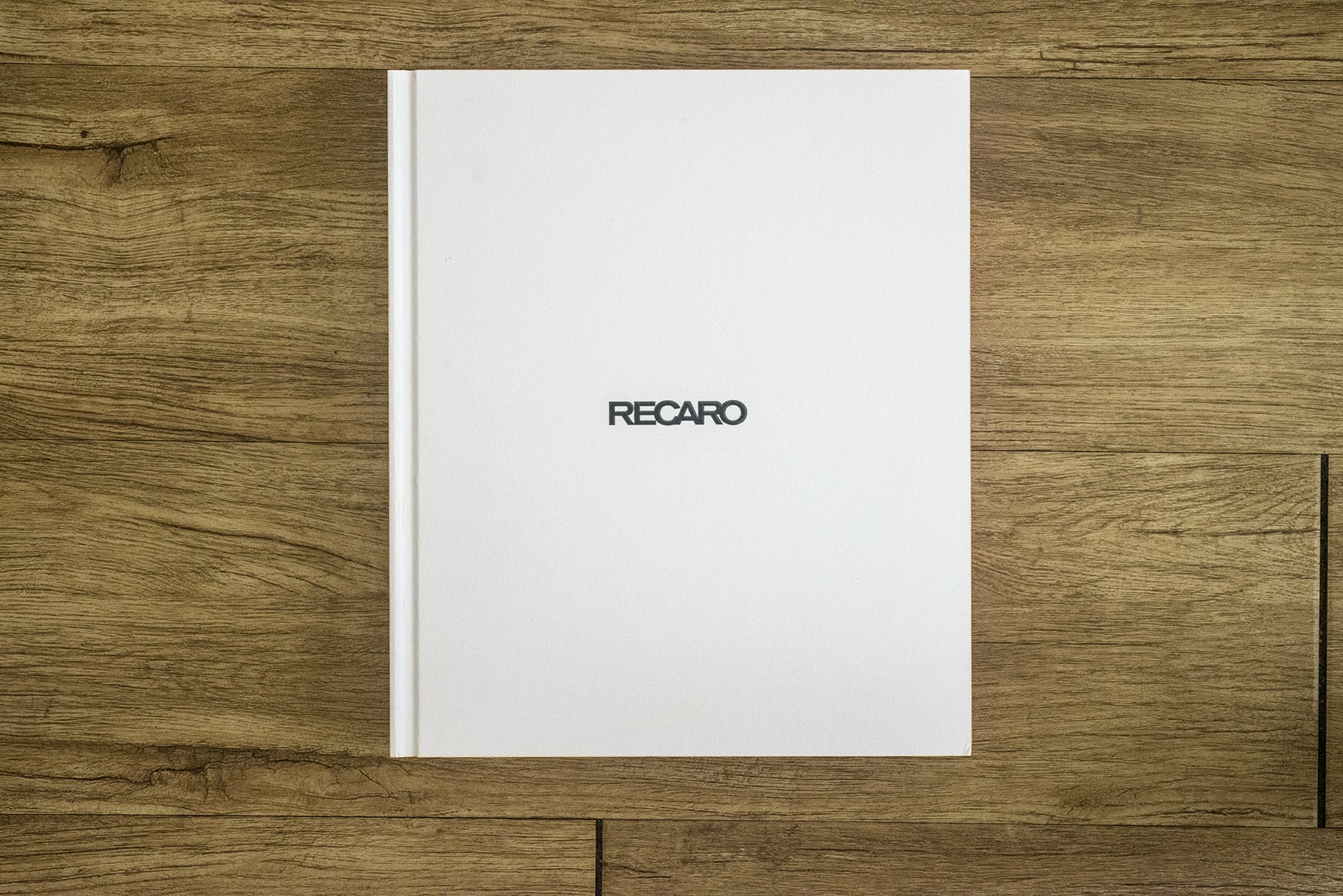
RECARO – Seating in Motion; Frank Jung. 2016 Delius-Klasing Verlag. 376p. ISBN: 978-3-667-10714-5. $160.00 from www.amazon.com. More information at info@delius-klasing.de.
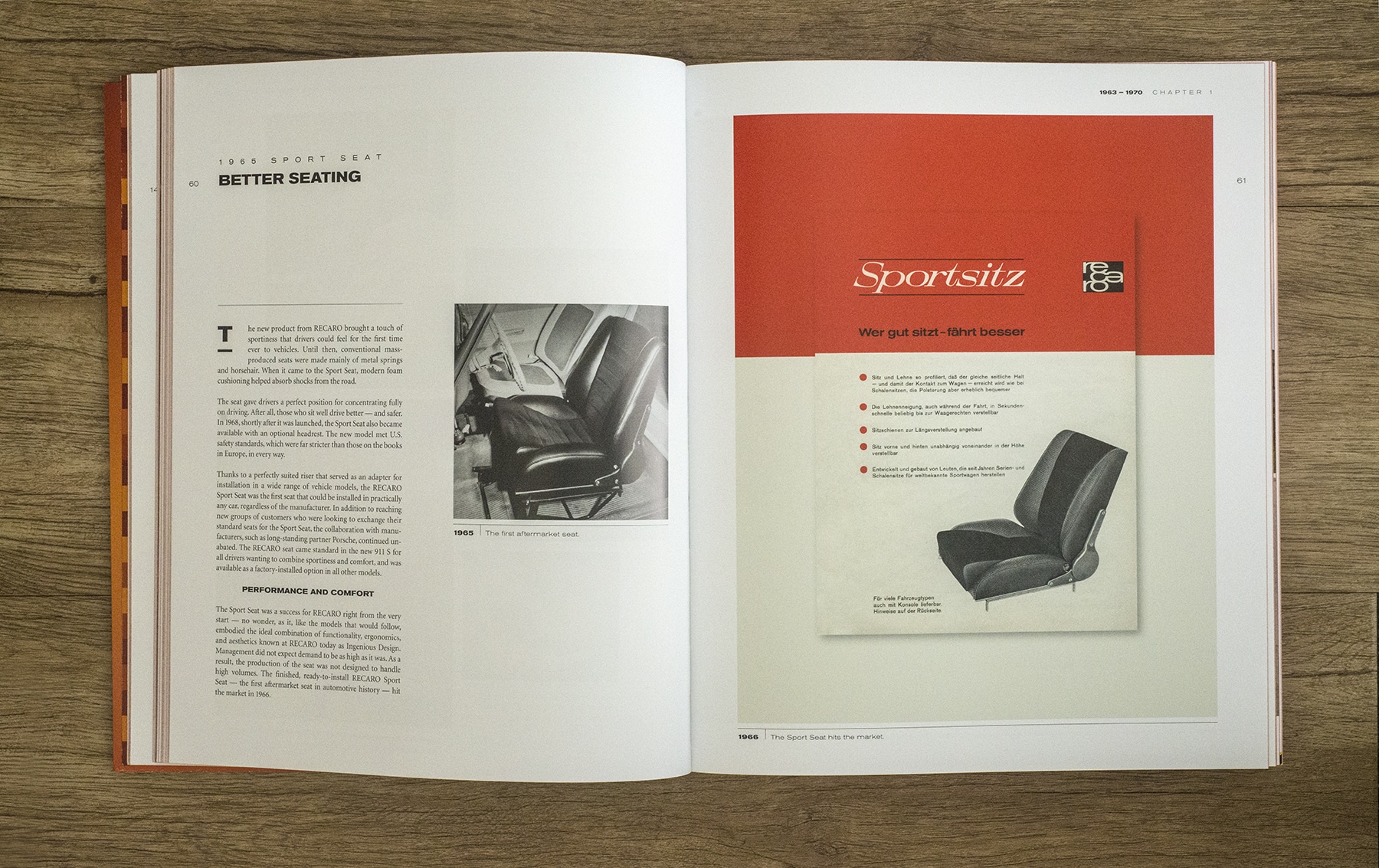
Seating is something we take for granted. Until we don’t. Until we squirm and shift in a poorly constructed, inadequately conceived, and ineptly designed chair. This is especially the case in two different situations: sitting and working, or sitting and riding or driving. RECARO, founded in 1963 following Porsche’s decision to acquire its parent company Stuttgarter Karosseriewerke Reutter & Company in the same year, became known as “the factory for seats.” Its name, made by combining REutter and CAROsserie began with 250 employees and today counts more than 2,000 worldwide. The company, which began as an original equipment manufacturer supplying carmakers and consumers, introduced its first Sport Seat in 1965, its first aircraft seats in 1971, and now child car seats and strollers.

In his lavishly illustrated book, Reutter and RECARO historian Frank Jung (who now is manager of Porsche’s historical archive) presents five chapters stuffed with information, insights, and interviews few outside the auto-making industry ever would have imagined, and gives his readers a deep appreciation for the comfort and support of the seats in their Porsches and a clear idea of the meaning of the quote that opens the book from architect Ludwig Mies van der Rohe: “A chair is a very difficult object. A skyscraper is almost easier.” Getting to the bottom of that assertion is one of the great rewards of this book.
These final two books fit a category by themselves. Intensely and intensively researched, each provide answers and fill in vast blank areas in two subjects integral in Porsche’s history: One is a car that we already feel we know all about but soon discover we know next to nothing, and the other is a man about whom very few knew very much at all. As the saying goes, all will be revealed.
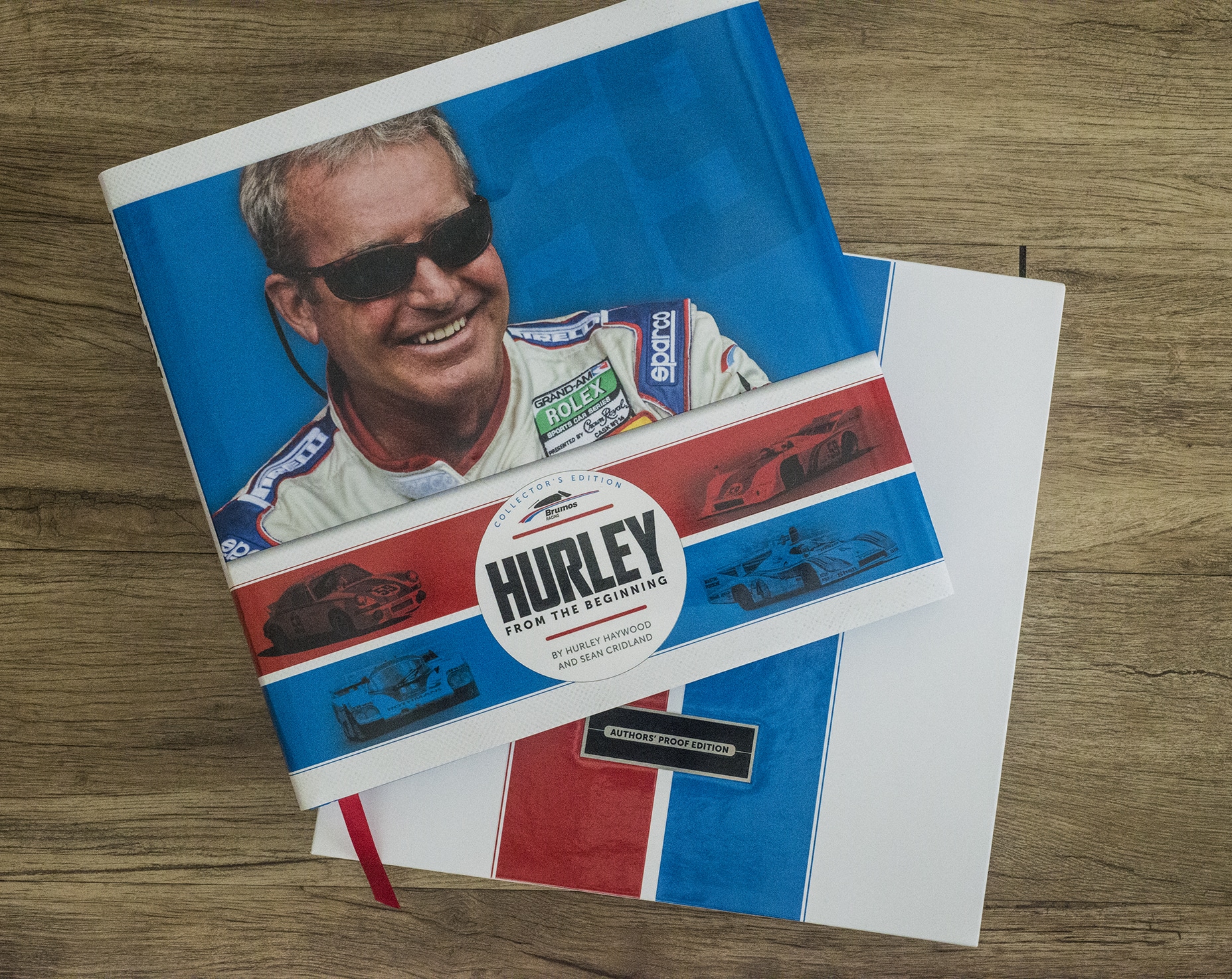
Hurley From the Beginning; Hurley Haywood and Sean Cridland. 2018 Visions of Power Press. 420p. ISBN: 978-0-9996896-0-8. $95.59 from Visions of Power Press. More information at www.hurleybook.com
Hurley Haywood, widely considered America’s best – and one of the world’s most accomplished endurance drivers – has won the 24 Hours of Daytona five times, the 24 hours of Le Mans three times, and the 12 hours of Sebring twice. And it’s likely that, for many racing enthusiasts, that’s all they know about this quiet, private, introspective man.
Co-author/biographer Sean Cridland almost literally stumbled onto this project several years after first meeting Haywood during the 2011 Porsche Parade in Savannah, Georgia, near the racer’s office at Brumos Porsche in Jacksonville, FL. But rather than misstepping, Cridland caught his footing and in February 2015, he and Haywood began to talk. As many interviewers who have spoken with Haywood will attest, he has polished his entire life story down to a 15-to-20 minute recitation. Follow-up questions are met with courtesy, patience, and a brief answer. Cridland took all these as his starting point and over the next several years, he spoke with everyone he could to fill in and flesh out the story.

The result is a “compleat” history has gained much greater dimension by the decision Cridland and Haywood made to incorporate not only racing history into this story but also events of the times. And because this book is deeply personal in places, placing Hurley’s revelations in the context of the times adds perspective and resonance to what we learn. Hurley’s style of story telling is conversational; you feel you’re sitting with him or near him as he relates his history. And what he has to say will keep you returning for the next chapter.

This is a book to savor, to read in pieces and segments. And accompanying the text – much more than can be absorbed in a 15-20 minute recitation – there are hundreds of photos that never have been published before.
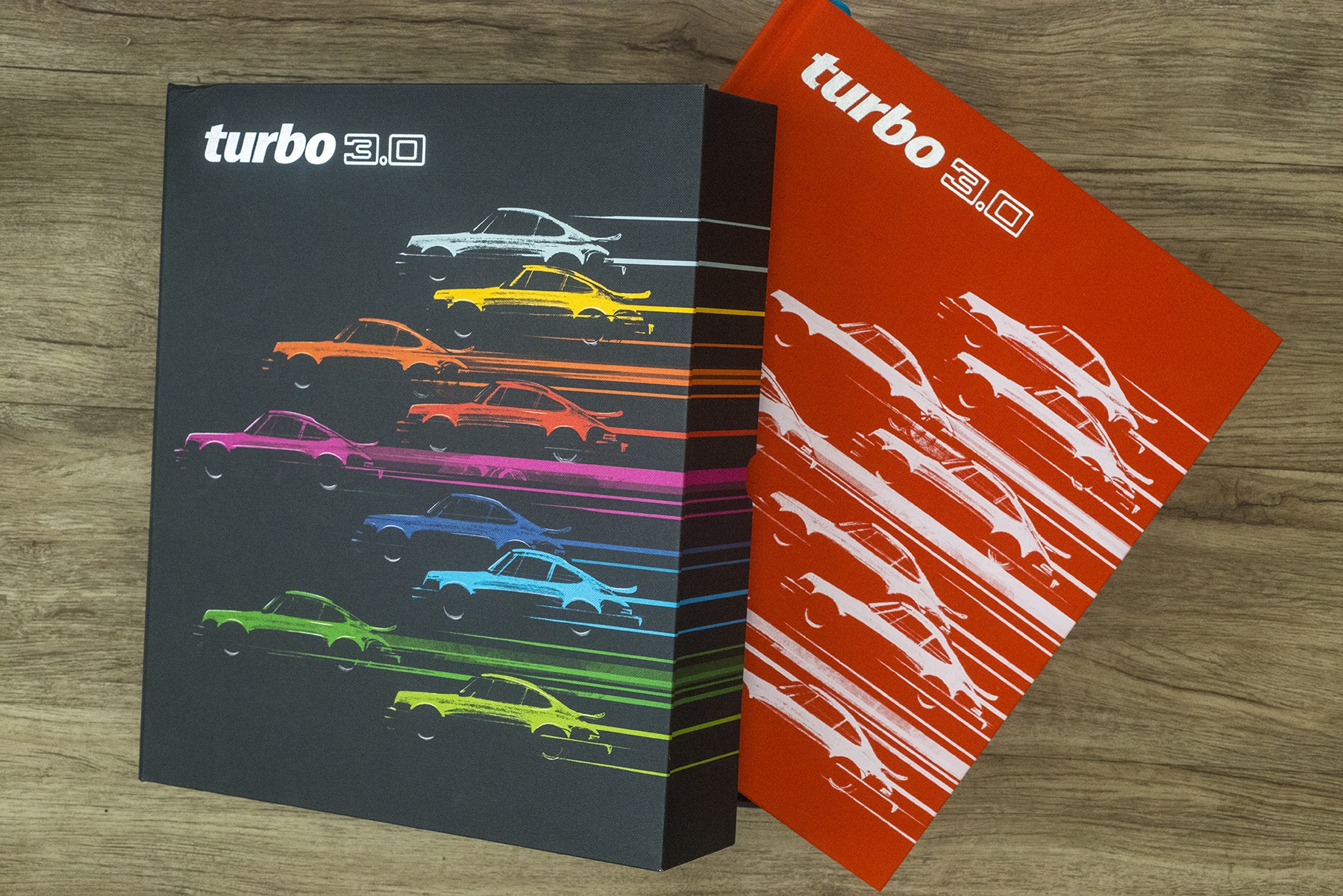
turbo 3.0 – Porsche’s First Turbocharged Supercar 1975-1977; Ryan Snodgrass. 2018 Parabolica Press. 536p plus supplements. ISBN: 978-0-9962682-4-0. $395.00 (limited edition) from www.parabolicapress.com. More information at info@parabolicapress.com
Ryan Snodgrass is an excellent storyteller who proved capable of making the subject of a single Porsche model – the 911 Carrera 2.7 MFI – engaging reading supplemented with exceptional documentation. That book had no shortcomings.

However, when Snodgrass set out to relate the planning, engineering, styling, and development history of the Typ 930, he used his own work as his benchmark. Then he reset it a great deal higher with his latest book turbo 3.0. This work – throughout – tends to humble the word “encyclopedic” as Snodgrass explores every element of turbocharging and the turbocharged Porsche 911 in detailed photos, diagrams, and documents. There are pages (and pages) of paint color representations, a complete series on actual cars, and an astonishing chart identifying ALL Turbo 3.0 colors and the frequency of their appearance in 1975, 1976, and 1977.
Reinforcing the exhaustive attention to detail, captions for many photos in this book not only identify the model year and country of original delivery but also include the car’s VIN. The chapter on interiors identifies standard and optional upholstery materials (and on one jarring two-page spread illustrates the interior color scheme of one particular 1977 Martini Turbo 3.0 (also identified by chassis number) done for the London Motor Show.

For those intrigued – or enthralled – by Porsche factory custom cars, Snodgrass’s chapter on these special Turbos is fascinating. Snodgrass devotes equal space, time, and research to Turbo accessories, literature, and of course, production data.
With the title of his book, Ryan Snodgrass posits an interesting idea. While most automotive historians quickly and willingly will award Porsche’s 959 with the title of world’s first supercar, Snodgrass suggests the Turbo 3.0 may more rightfully carry that distinction. It was, after all, the fastest production car in the world when Porsche introduced it. It also was one of its most courageous, announced just as O.P.E.C. told the world the mid-eastern oil exporting countries were cutting off supplies of petroleum.
Books such as this – especially one printed and produced with such high quality photo reproduction, taking immeasurably high research, and representing several years of Snodgrass’ and his collaborators’ time, necessarily must command high prices. If you own one of these cars or simply are deeply interested, you must have this book in your reference library.

